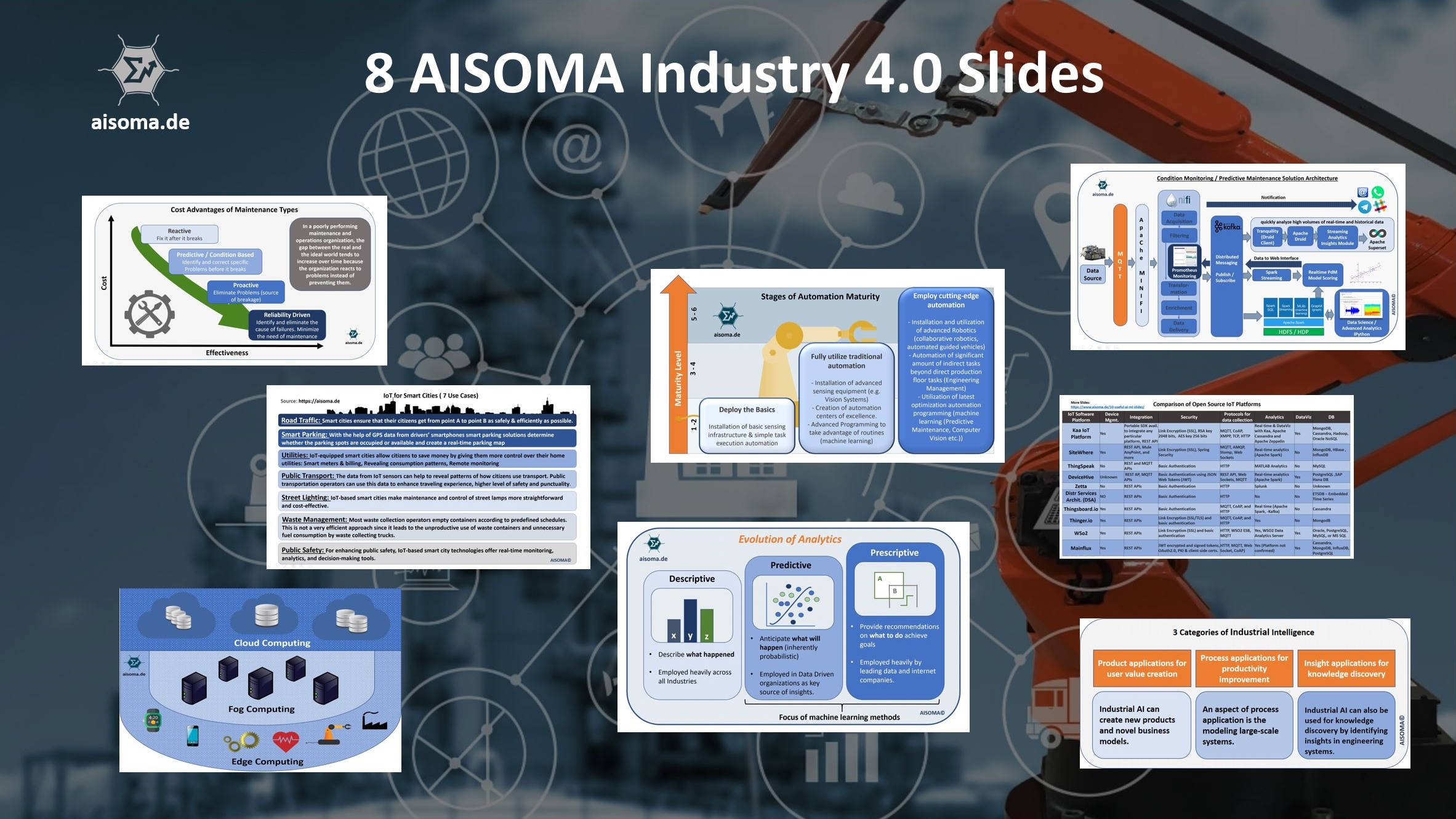Industry 4.0 is a name given to the current trend of automation and data exchange in manufacturing technologies. It includes cyber-physical systems, the Internet of things, cloud computing and cognitive computing. Industry 4.0 is commonly referred to as the fourth industrial revolution.
Industry 4.0 fosters what has been called a “smart factory”. Within modular structured smart factories, cyber-physical systems monitor physical processes, create a virtual copy of the physical world and make decentralized decisions. Over the Internet of Things, cyber-physical systems communicate and cooperate with each other and with humans in real-time both internally and across organizational services offered and used by participants of the value chain.
Below, a few slides on the topic Industry 4.0
1. Stages of Automation Maturity
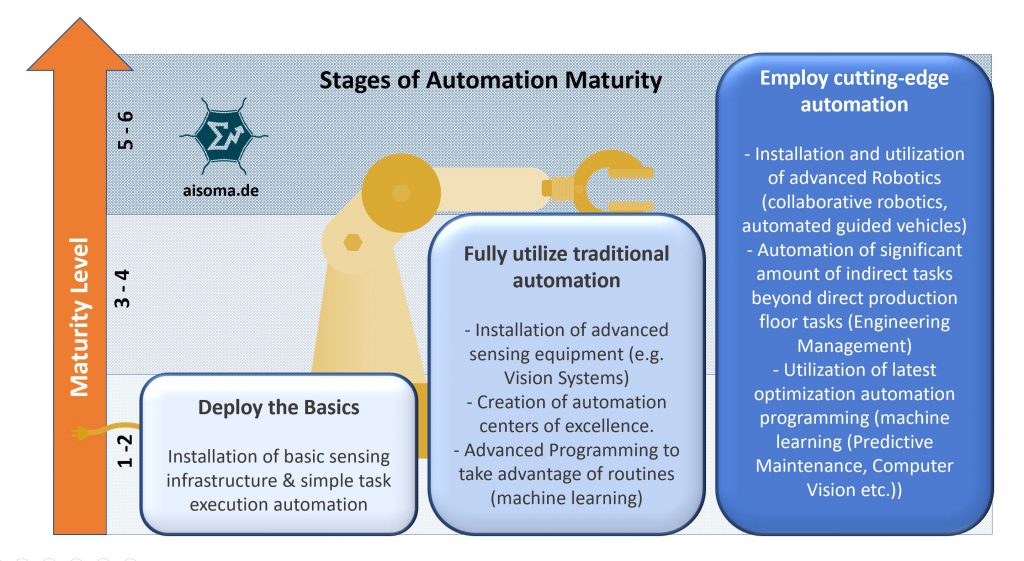
Automation is the technology by which a process or procedure is performed with minimal human assistance. Automation or automatic control is the use of various control systems for operating equipment such as machinery, processes in factories, boilers, and heat treating ovens, switching on telephone networks, steering, and stabilization of ships, aircraft, and other applications and vehicles with minimal or reduced human intervention. (more info)
2. Cost Advantages of Maintenance Types
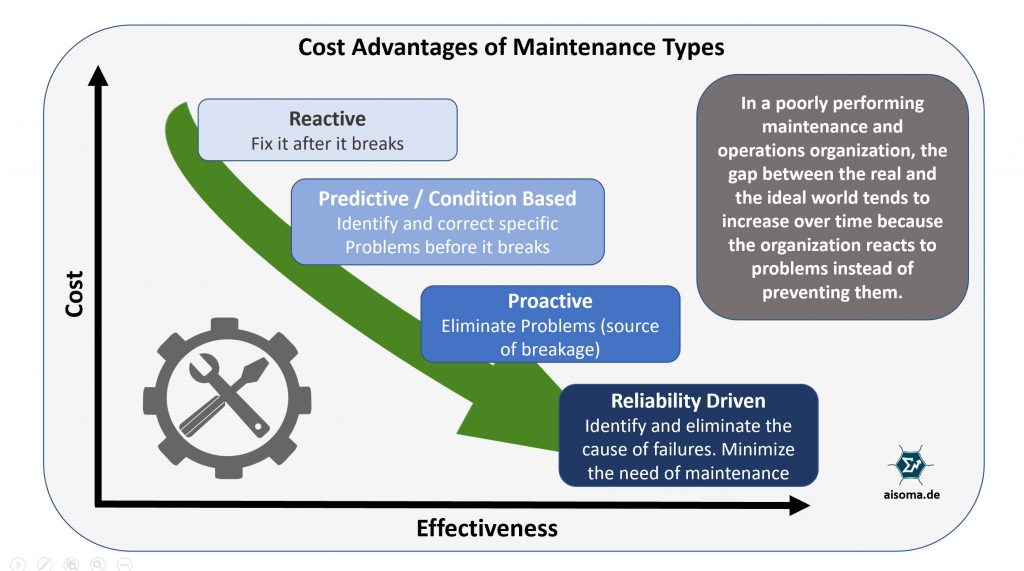
More Info: Smart Predictive Maintenance – The Key to Industry 4.0
3. Comparison of Open Source IoT Platforms
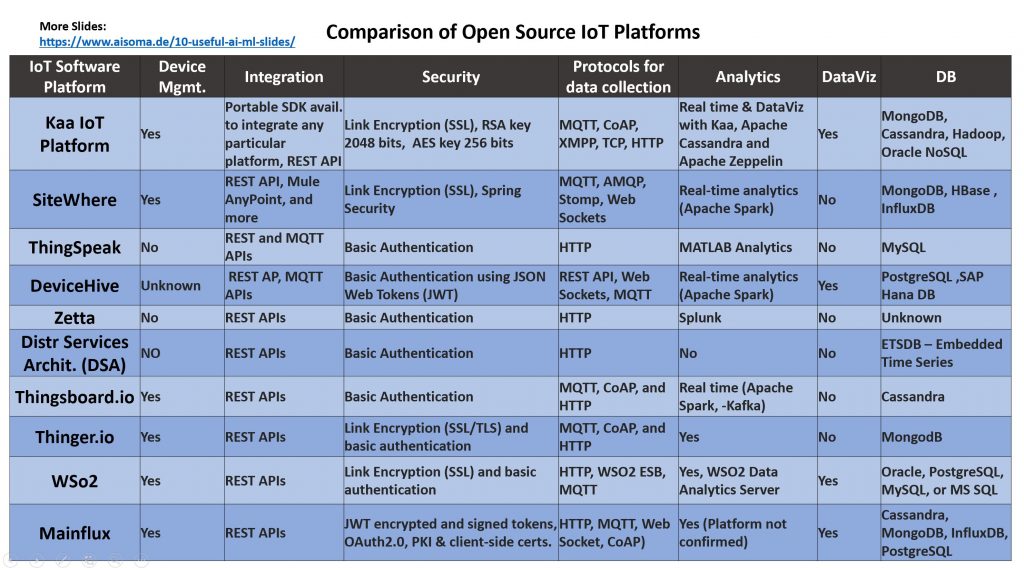
4. IoT for Smart Cities (7 Use Cases)
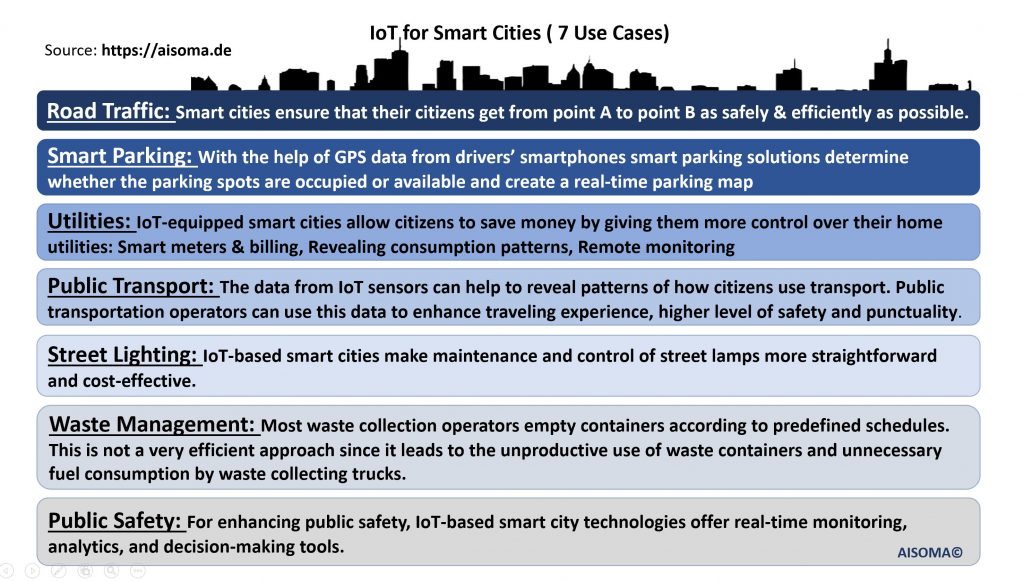
Tweet this:
[bctt tweet=”8 Useful Industry 4.0 Slides #Industry40 #IoT #IIoT #IndustrialIntelligence #EdgeComputing #5G #SmartCities #BigDataAnalytics #MachineLearning #AI” username=”AISOMA_AG”]
5. 3 Categories of Industrial Intelligence
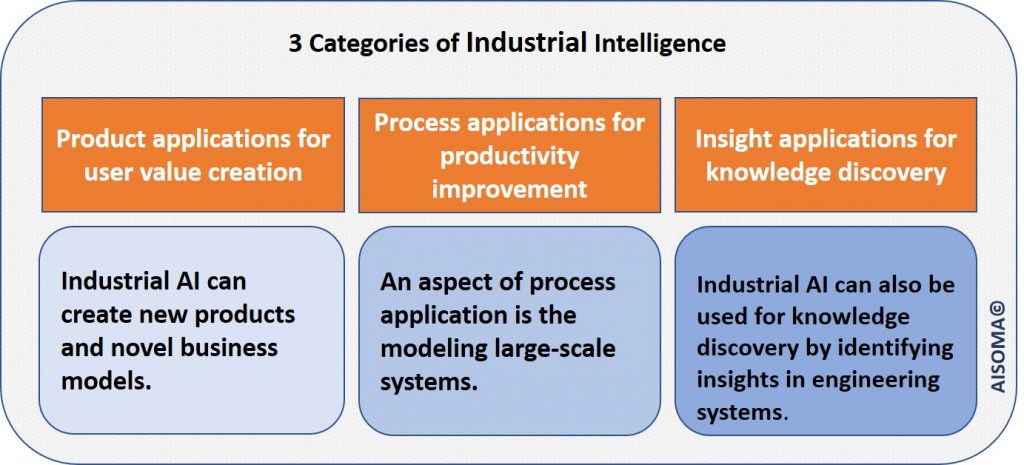
More Info: 3 Categories of Industrial Intelligence
6. Edge Computing
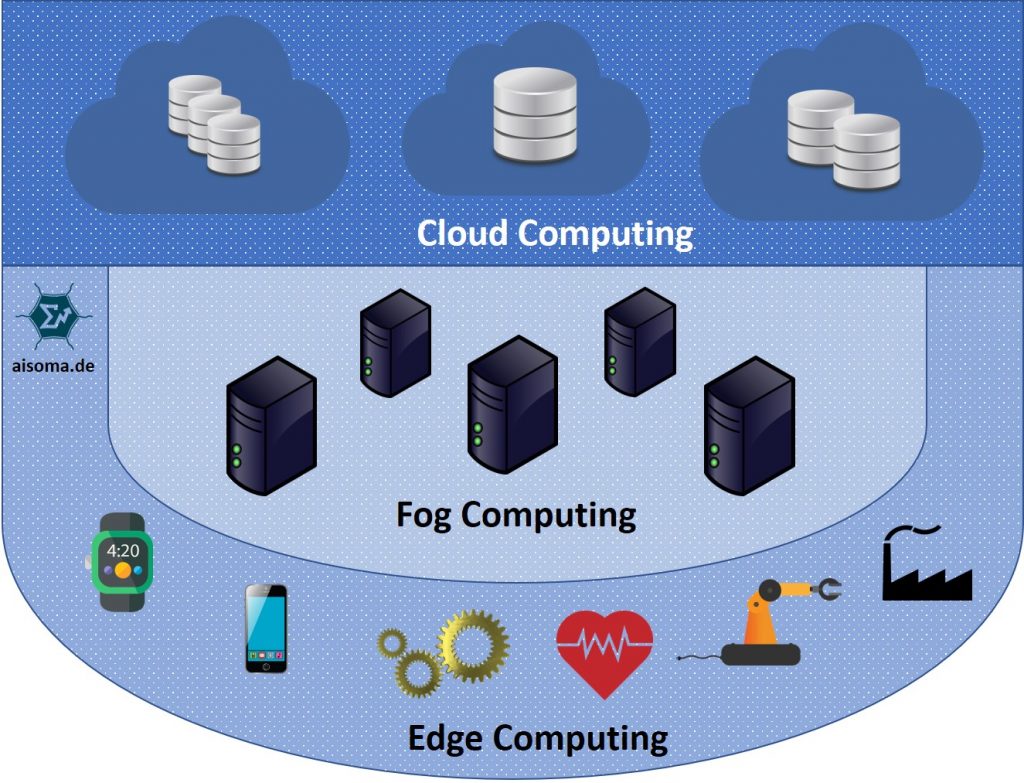
More info: What is Edge Computing?
7. Condition Monitoring / Predictive Maintenance Solution Architecture
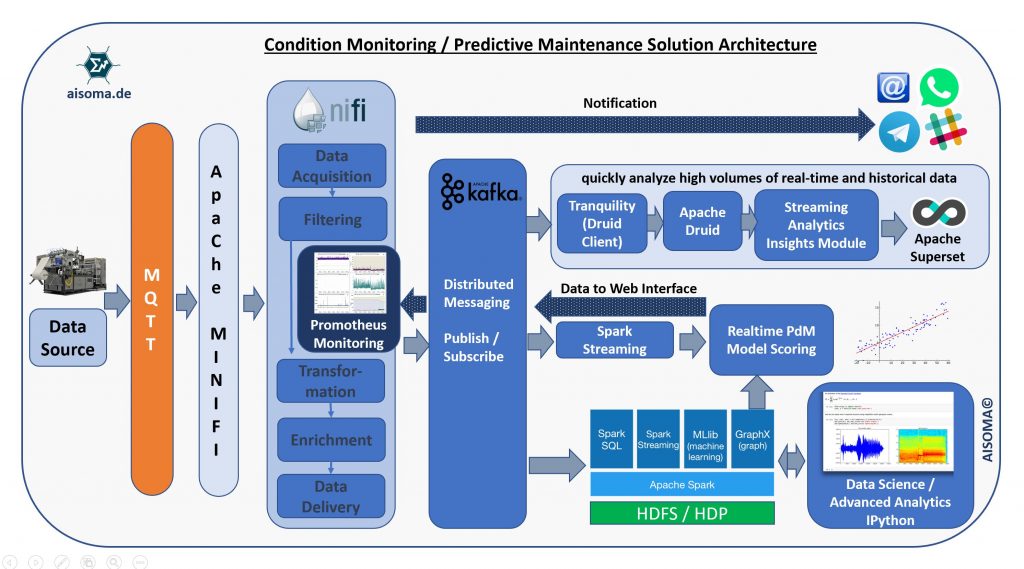
More Info: Smart Predictive Maintenance: The Key to Industry 4.0
8. Special Features of 5G
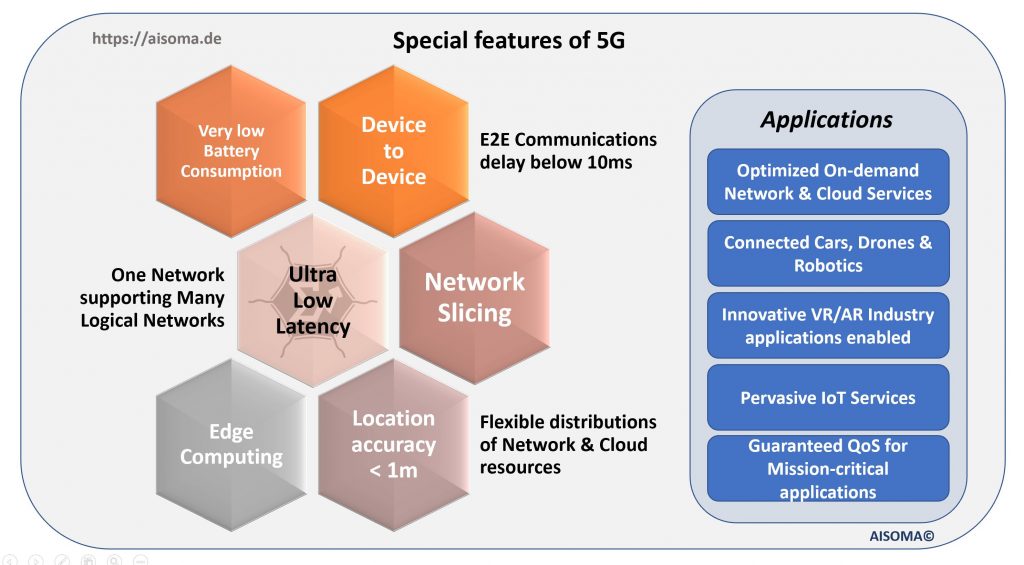
5G networks are digital cellular networks, in which the service area covered by providers is divided into a mosaic of small geographical areas called cells. Analog signals representing sounds and images are digitized in the phone, converted by an analog to digital converter and transmitted as a stream of bits. All the 5G wireless devices in a cell communicate by radio waves with a local antenna array and low power automated transceiver (transmitter and receiver) in the cell, over frequency channels assigned by the transceiver from a common pool of frequencies, which are reused in geographically separated cells. The local antennas are connected with the telephone network and the Internet by a high bandwidth optical fiber or wireless backhaul connection. Like existing cellphones, when a user crosses from one cell to another, their mobile device is automatically “handed off” seamlessly to the antenna in the new cell. (More info)
Tweet this:
[bctt tweet=”8 Useful Industry 4.0 Slides #Industry40 #IoT #IIoT #IndustrialIntelligence #EdgeComputing #5G #SmartCities #BigDataAnalytics #MachineLearning #AI” username=”AISOMA_AG”]
More Slides: 10 Useful AI / ML Slides
AISOMA
